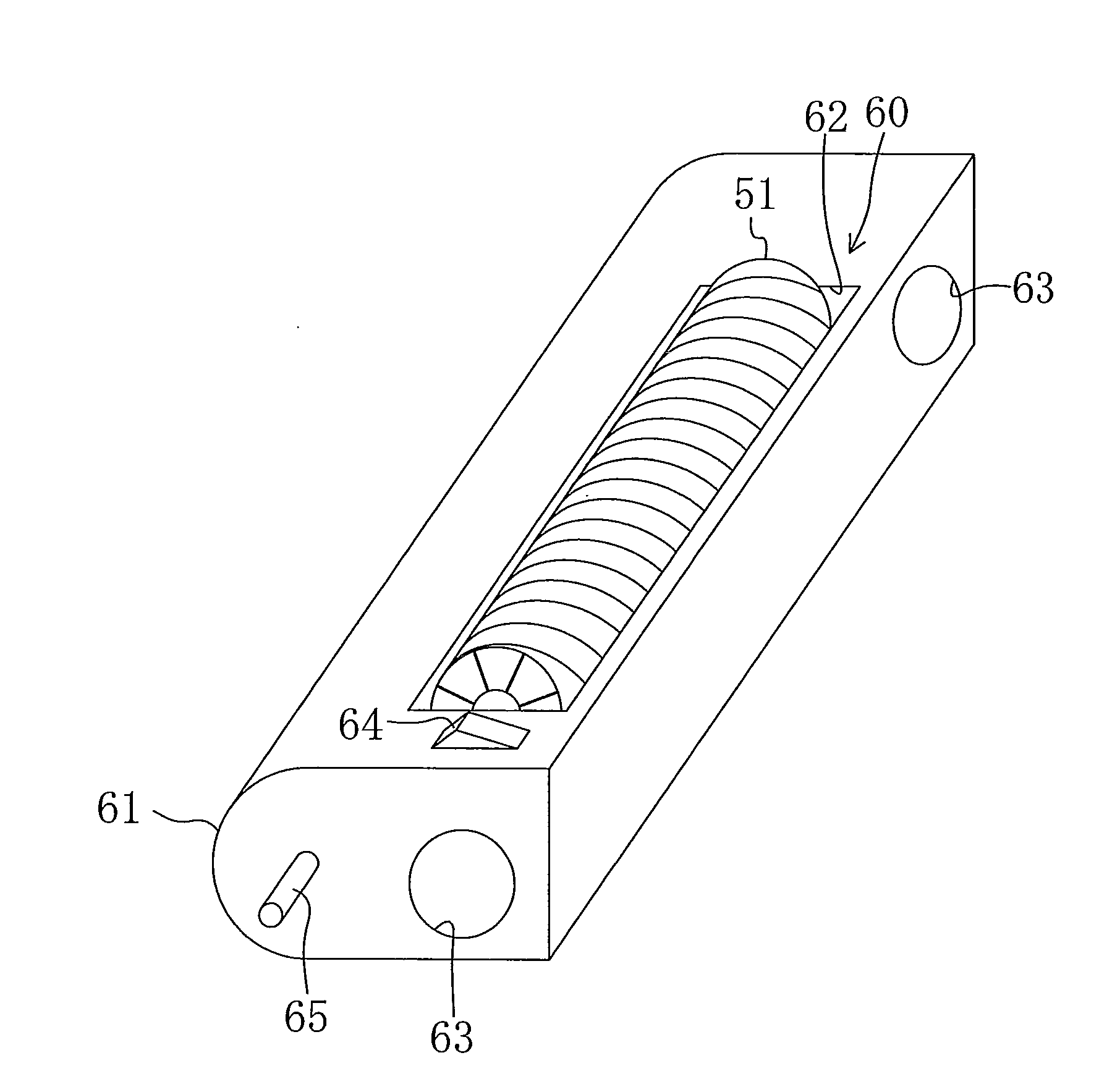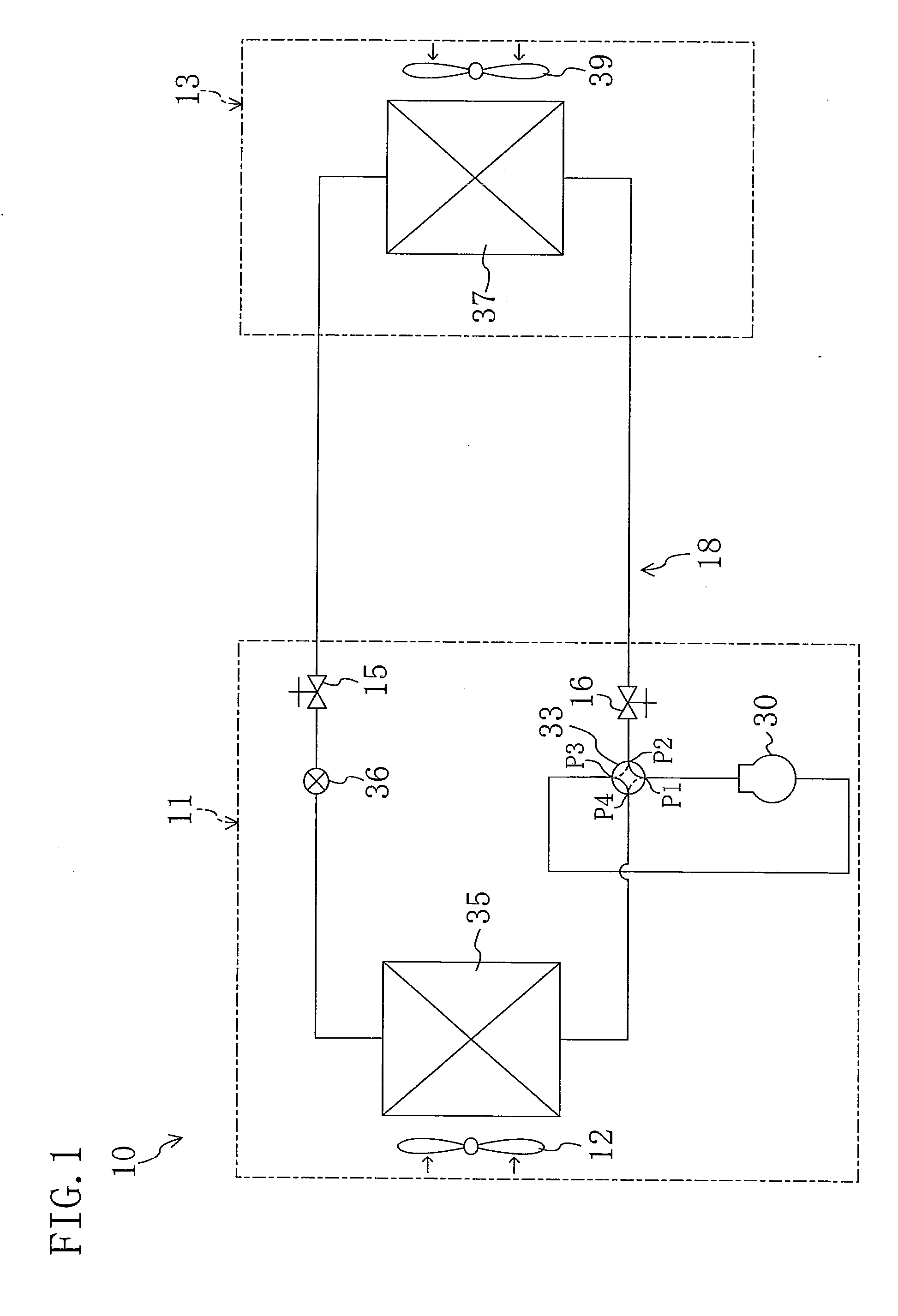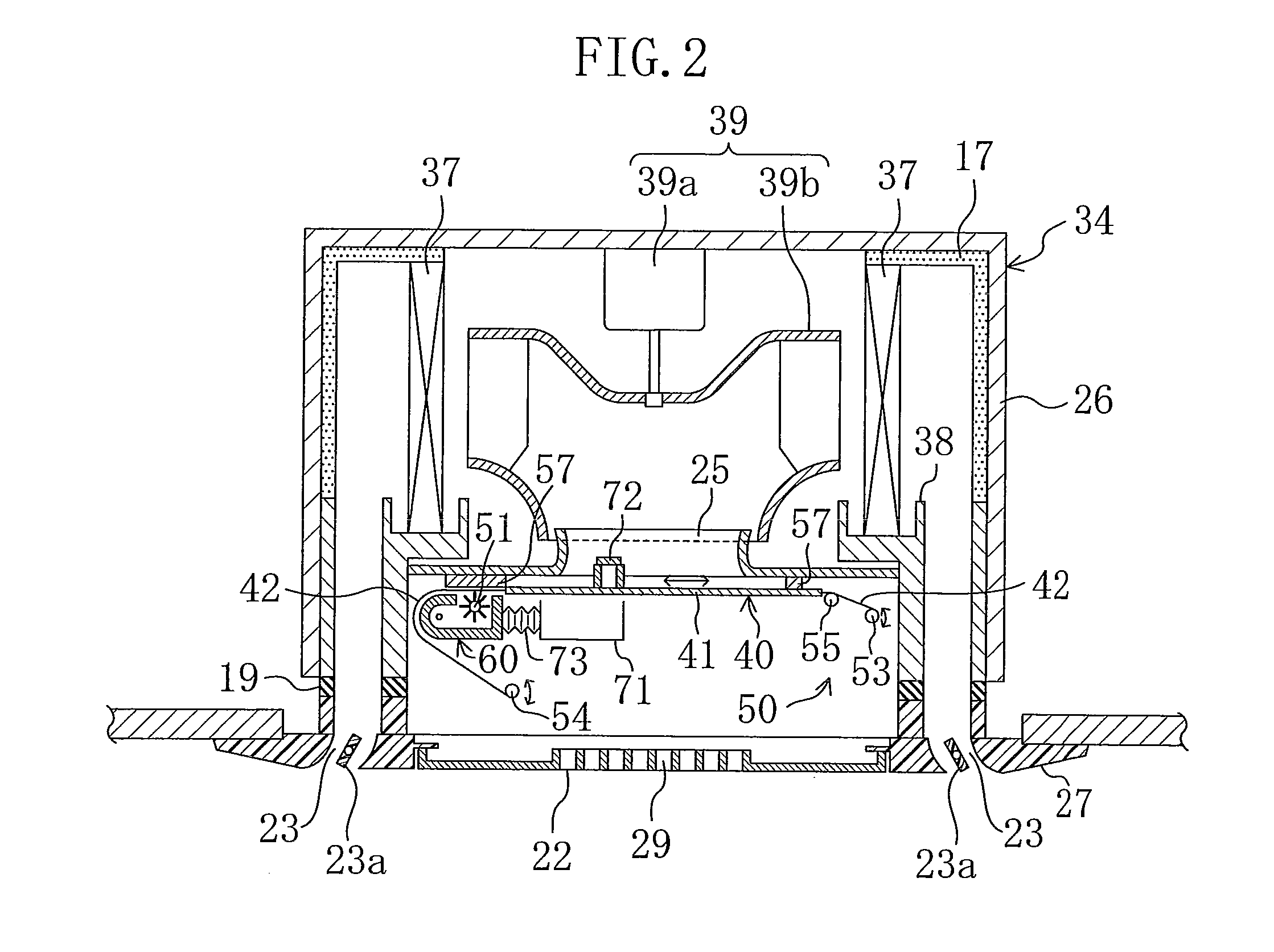Indoor unit of air conditioner
a technology for air conditioners and units, applied in lighting and heating apparatus, ventilation systems, heating types, etc., can solve the problems of burdensome detachment/attachment of container boxes, especially for elderly people and women, and achieve the effects of reducing the flow resistance of air, dust transfer capability, and improving the efficiency of disposal
- Summary
- Abstract
- Description
- Claims
- Application Information
AI Technical Summary
Benefits of technology
Problems solved by technology
Method used
Image
Examples
first embodiment
Modified Example of First Embodiment
First Modified Example
[0177]A first modified example is achieved by adding an air collecting plate (91) to the damper (72) of the supply duct (71) of the first embodiment as shown in FIG. 11. Specifically, the air collecting plate (91) is a vertically oriented concave plate, and is arranged along half the circumference of an inlet of the damper (72). The air collecting plate (91) is arranged with a concave surface (91a) opposing to the direction of the air blowing from the indoor fan (39). In this modified example, the air blowing from the indoor fan (39) is reliably captured by the air collecting plate (91). Therefore, the air blowing from the indoor fan (39) easily enters (is easily brought into) the supply duct (71) from the damper (72). This increases the amount of air supplied to (brought into) the dust container (60), thereby allowing for easy discharge of the dust. As a result, the efficiency of the dust discharge (the dust transfer) improv...
second modified example
[0178]In a second modified example, the dust is transferred and contained in a dust collection box (92) placed outside the casing (34) as shown in FIG. 12. Specifically, the dust collection box (92) is attached to a side surface of the casing (34) in the space above the ceiling. The discharge duct (74) extending from the inside of the casing (34) is connected to the dust collection box (92), and the dust is transferred from the dust container (60), and is contained in the dust collection box (92). The dust collection box (92) is sufficiently larger in volume than the dust container (60). Therefore, the box can contain a larger amount of dust than the dust container (60). Specifically, since the dust container (60) is arranged below the air filter (40), i.e., near the path of the sucked air, it needs to be reduced in volume as much as possible so as not to disturb the air flow. Therefore, the dust container (60) cannot contain a very large amount of dust. In this modified example, ho...
third modified example
[0181]In a third modified example, the adjuster plates (23a) are adjusted to maximize flow resistance of the outlets (23) in transferring the dust in the filter cleaning operation of the first embodiment. In this case, the flow resistance of the outlets (23) is maximized (increases) in the filter cleaning operation, thereby drastically reducing the amount of air blowing out of the outlets (23) as compared with the amount in the normal operation. This reduction increases the amount of air blowing into the supply duct (71), thereby increasing the amount of air supplied to the dust container (60). Thus, the efficiency of discharge (transfer) of the dust accumulated in the dust container (60) improves, thereby reducing time required for the filter cleaning operation.
[0182]In this modified example, the outlets (23) may be closed by the adjuster plates (23a) to reduce the amount of air blowing out of the outlets (23) to zero (approximately zero). In this case, the amount of air blowing in...
PUM
 Login to View More
Login to View More Abstract
Description
Claims
Application Information
 Login to View More
Login to View More - R&D
- Intellectual Property
- Life Sciences
- Materials
- Tech Scout
- Unparalleled Data Quality
- Higher Quality Content
- 60% Fewer Hallucinations
Browse by: Latest US Patents, China's latest patents, Technical Efficacy Thesaurus, Application Domain, Technology Topic, Popular Technical Reports.
© 2025 PatSnap. All rights reserved.Legal|Privacy policy|Modern Slavery Act Transparency Statement|Sitemap|About US| Contact US: help@patsnap.com



